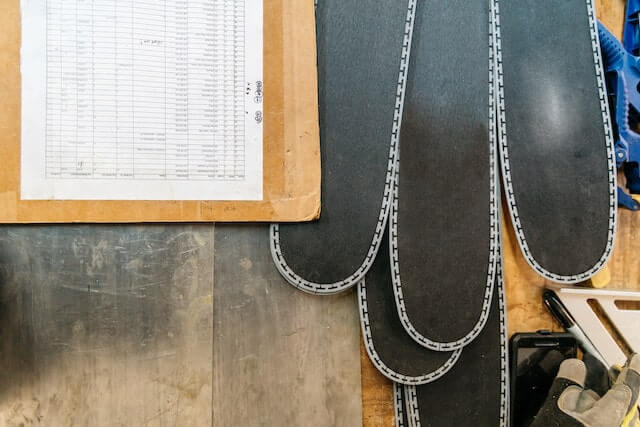Any waste costs a company money — no matter if it’s production waste, inflated costs, or poor use of employees’ time. These are resources that could go toward innovation, growth or future-proofing the company. There is an option: you can adopt lean manufacturing principles to help refine your production processes.
These principles can help your business reduce the risk of loss via waste or unnecessary costs.
You can use them to carefully examine how your company operates at every single step of production and look for ways to streamline or cut waste. This will help improve overall efficiency, increase productivity and even boost profitability.
In this post, we’ll look at:
- The five lean manufacturing principles
- Implementing lean manufacturing principles
- Benefits of the lean manufacturing approach
- Canadian manufacturers using lean manufacturing principles
- How your venture can implement lean manufacturing
Keep reading to learn more, along with key tips and benefits that come along with implementing them into your business.
Editor's note: Need a logo for your startup? Make your venture look legit with a great-looking logo you create yourself for free.
What are the five lean manufacturing principles?

At its core, lean manufacturing principles strive to deliver the highest quality possible with the smallest amount of waste.
Waste refers to any part of your manufacturing process that your customers wouldn’t want to pay for.
Below, we’ll review each of the five lean manufacturing principles in more detail.
1. Value
Value to the customer is everything, which is why it’s the first lean manufacturing principle. And the first step here is to talk to your customers.
It’s important you get genuine feedback on what they value and what their expectations are when it comes to your products or service.
You can then focus on delivering exactly what they need and want, plus examine any part of your process that doesn’t serve that goal. Your business is only sustainable if customers buy from you, so it pays to keep their priorities in mind.
2. Value streams
The value stream is the entire lifecycle of a product or service, from the time it is produced to its final disposal.
Examining the value stream carefully can help you identify areas where waste is occurring.
This will allow you to make improvements and expand the scope beyond your production process.
For example, your scope could include:
- Supply chain considerations
- Where and how you source materials
- How you transport both materials and finished products
This part of your lean manufacturing principles will help you drill down your efforts in the next stages.
3. Flow
Once you’ve examined how your products or services move through your established processes, the next thing to consider is how smoothly they move through each stage. Think about where they get stopped and why.
Once you examine these pauses, you can figure out what’s happening in that stage to evaluate and improve it. Any delays or pauses in your process will likely signify an interruption that is costing time, money or both.
4. Pull
A traditional approach to manufacturing might have your business trying to estimate or forecast your sales. This is typically done to see how much you need to produce so that you can handle the demand.
And although you might’ve managed with a process that takes a lot of extra time and delay for some time, you can start looking for things to trim right away.

Look at every step of your process to see how you can make your business more nimble.
The faster you can move from production to delivery, the less you need to produce in advance.
If you can move your manufacturing and production process to only meet demand (or pull), you can cut even more costs and waste.
5. Perfection
The final stage in lean manufacturing principles will bring us back to the original goal:
Deliver the highest quality product to your customer.
Positive changes are good, but you should never stop looking for new opportunities to refine how you run your business.
This approach requires a commitment to improve on a continuous basis, which means you’ll never really be finished.
The good news is that it also means you could be boosting your profits and strengthening your business for years to come.
From that perspective, you can begin to identify areas of your business that are unnecessary to deliver on a customer’s expectations.
These principles apply to every department in your organization — from the office to the sales department and even the production floor.
Related: The key to growth and profit
Implementing lean manufacturing principles
If you’re consistent with your lean manufacturing principles in every step of the manufacturing process, you'll create powerful opportunities for your business. These opportunities can help you ramp up profits and build company sustainability over time.
You can implement lean manufacturing principles by exploring these areas:
- Ask customers what they value most to improve quality control
- Start process mapping to identify opportunities
- Look for ways to cut production waste
- Trim unnecessary expenses
- Empower every employee to identify gaps and suggest improvements
- Reduce inventory to save space and costs
- Improve efficiency of the workforce
- Apply a just-in-time delivery (JIT) system to align the arrival of supplies with production schedules
- Commit to continuous improvement
Additionally, you can partner with suppliers to develop better ways of handling inventory, transportation, shipping and other related steps.
Related: Supply chain management: Tips for small business
Benefits of the lean manufacturing approach

When organizations adopt lean manufacturing principles, they trim wasted time, products and resources at every stage of their production process.
These improvements help companies free up money that can be invested elsewhere.
And ultimately, the overall health of the business will start to improve.
Here are just a few of the benefits of going lean:
- Added profits from reduced waste
- Increased productivity through streamlined processes
- Higher quality products delivered to customers
- Improved service levels for customers
- Reduced inventory levels to manage and store
- Lowered prices for customers from better efficiency
- Improved employee morale through better work practices
- Strengthened abilities for a company to compete in the market
While it may seem like larger manufacturers have more use for this approach, lean manufacturing principles can benefit small organizations, too. The scale of the impact may be relative to the size of the company, but certainly, the gains would be valuable.
Canadian manufacturers using lean manufacturing principles
Lean manufacturing is a key force within many Canadian companies and many organizations have already benefitted from its principles.
There are even lean manufacturing conferences taking place from Vancouver to Ottawa in the next two years.
A few examples of Canadian organizations that have embraced lean manufacturing principles include:
- Canadian Tire
- Moore Group
- Bombardier
- Alcan
Could lean manufacturing be right for your business?
Most businesses have room to improve, especially when it comes to:
- Streamlining processes
- Reducing waste
- Eliminating inefficiencies
So yes, it’s likely this approach could hold benefits for your company as well.
Remember that lean manufacturing serves the customer first.
You’ll need to ensure that your company delivers the highest quality possible with as little waste as possible.
It’s also important to practice continuous improvement so that you remain competitive in the market. Continuing to explore ways to drive your business forward is good for any business. Reaping the benefits that come with going lean is always a win.






